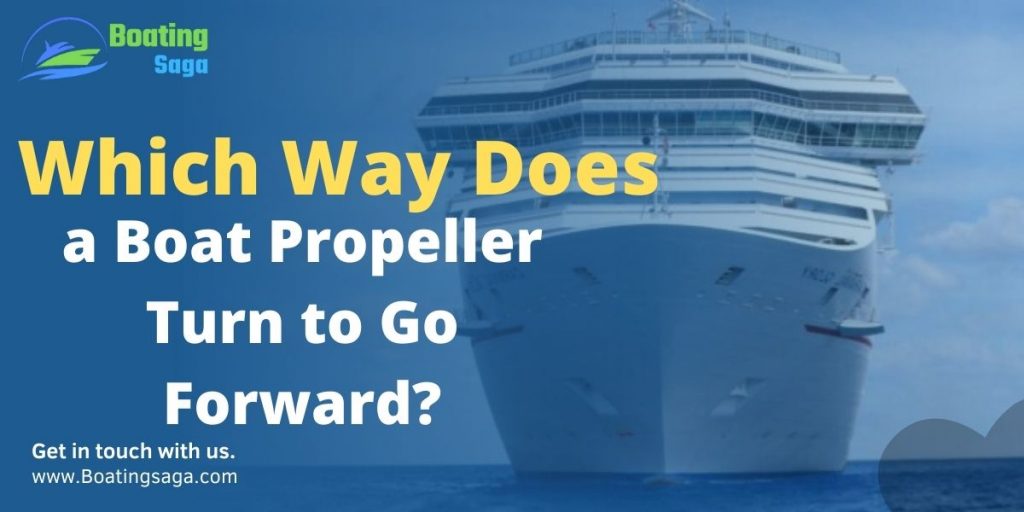
When you are in a boat and want to go forward, you need to make sure the propeller is turning the correct way. If it is not, you will end up going in the opposite direction than you intended.
Which Way Does a Boat Propeller Turn to Go Forward?
The propeller needs to turn clockwise to go forward. This is because when it spins, it creates a force called thrust that pushes the boat in the direction that it is pointing. If it were spinning counter-clockwise, it would push the boat backwards.
In most cases, when a boat is traveling at a high speed in open water, the propeller will turn to the right in order to create more forward motion.
How Does a Boat Propeller Rotate?
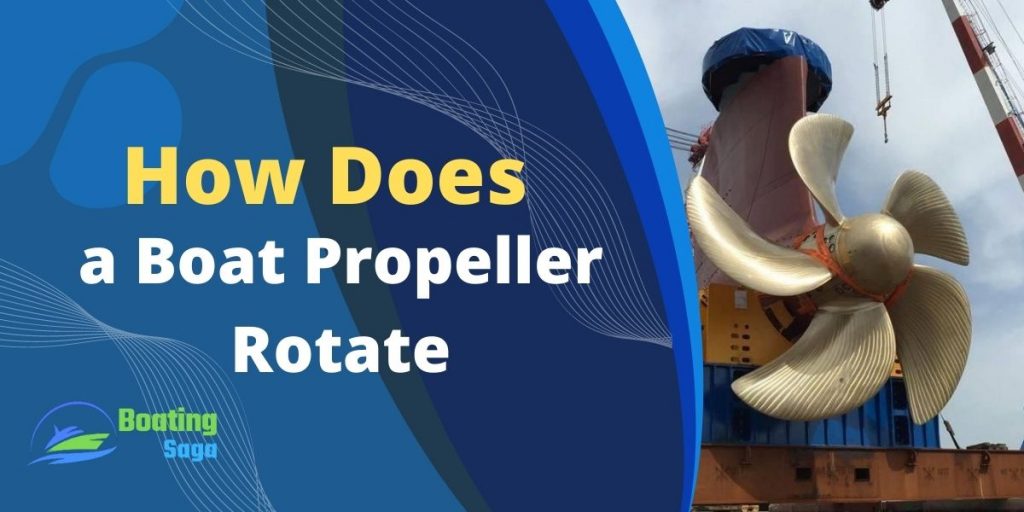
The rotation of a boat propeller is determined by the pitch and diameter of the blades. The blades are designed to move through the water at a certain speed, which creates a force that pushes the boat forward.
The angle of the blades also affects how much thrust is generated. As the propeller spins, it causes water to flow over the blades in a swirling motion. This creates a low pressure area on top of the blade and a high pressure area on the bottom. This difference in pressure creates lift, which propels the boat forward.
When Does a Boat Propeller Turn Clockwise or Counterclockwise?
The direction a boat propeller spins is important for two reasons: the direction the propeller spins determines the direction the boat will move and the direction of the propeller blades can affect how efficiently the propeller works. Most boat propellers spin clockwise, but some boats have counterclockwise-spinning propellers.
Clockwise-spinning propellers are more common because they create more forward thrust than counterclockwise-spinning propellers. When a boat has a counterclockwise-spinning propeller, it will move in reverse when the engine is turned on. This is why many boats have their engines configured to spin clockwise, even if they have a counterclockwise-spinning propeller.
The direction of a boat propeller’s blades also affects its efficiency.
How Do You Tell if a Boat is Turning Left or Right?
When you’re driving a car, it’s easy to tell if the vehicle is making a left or right turn. You can see the turn signal and know what the driver is planning to do. But what about boats? How do you know which way they’re turning?
One way to tell is by looking at the position of the propeller. If the propeller is turning clockwise, the boat is turning to the right. If it’s turning counter-clockwise, then the boat is turning left.
Another way to tell is by looking at where the bow and stern are pointing. If the bow and stern are both facing in one direction, then the boat is going straight. If they’re pointing in different directions, then the boat is making a turn.
Why the Direction a Boat Propeller Turns Matters
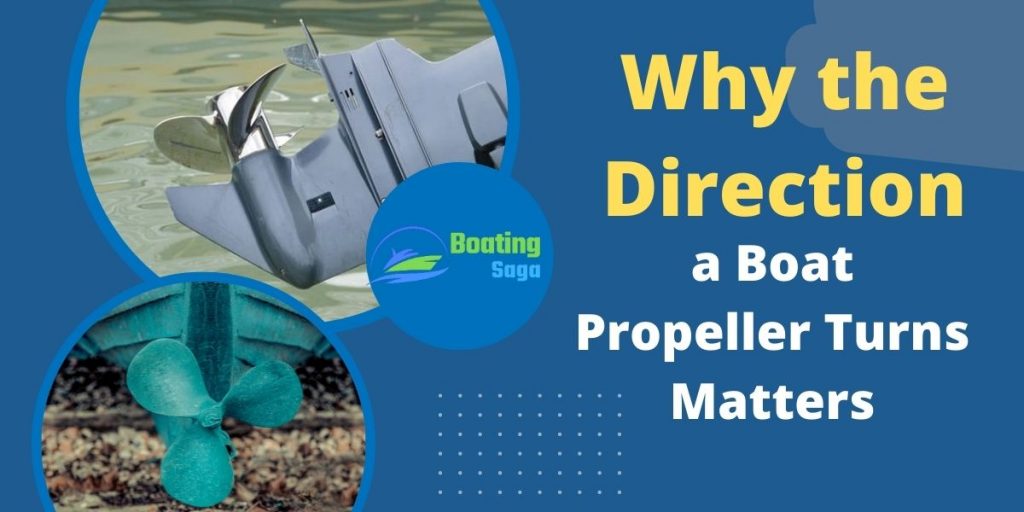
The direction a boat propeller turns has a significant impact on how the boat moves through the water. In most cases, boats move more efficiently when the propeller is turning in the same direction as the boat is moving. When a propeller is turning in the opposite direction as the boat, it can create drag and resistance that slows the boat down.
There are some instances, such as when operating in reverse, when it is preferable to have the propeller turn in the opposite direction. However, for most boating applications, it is best to have the propeller turning in the same direction as the boat.
How the Direction of a Propeller Affects Boat Speed
When a propeller is turned, it creates thrust. The direction of the propeller blades will determine how the boat moves through the water.
The direction of the propeller blades can be changed to create more or less thrust. When the propeller blades are angled so that they move the boat forward, it is called “pitching” the boat. If the propeller blades are angled so that they push the boat backwards, it is called “backing” the boat.
Changing the pitch of a propeller can help a boat move faster or slower. When a propeller pitches a boat forward, more water is displaced in front of the boat and less water is displaced behind it. This causes drag on the back of the boat which slows it down.
How Do You Know if Your Propeller is Turning the Wrong Way?

If you’re not sure whether your propeller is turning the wrong way, here are a few things to look out for:
- If your boat seems to be traveling slower than it should be going, or if it’s having trouble getting up to speed, that could be a sign that your propeller is turning the wrong way.
- Another indication that your propeller might be turning the wrong way is if you’re experiencing excessive vibration or noise from the engine.
- If you’re not sure whether your propeller is turning the wrong way, it’s always best to consult with a mechanic or someone who knows about boats and engines. They can help you figure out what’s going on and how to fix it.
What Can You Do if Your Propeller Isn’t Turning the Right Way?
If your boat propeller isn’t turning the right way, don’t worry - there are a few things you can do to fix the problem.
- First, check the blades of the propeller for any damage or debris. If there is any damage, you will need to replace the propeller. If there is debris, you can remove it with a propeller cleaner or by using a brush.
- Second, make sure that the propeller is properly aligned. You can do this by checking the alignment marks on the propeller and on your boat. If they are not aligned, you will need to adjust them.
- Third, make sure that your boat is in neutral and that the engine is turned off when you are adjusting the propeller.
- Fourth, check your engine’s fuel mixture and adjust it if necessary.
- Fifth, check for any obstructions in your water intake and remove them if necessary.
Related Question:
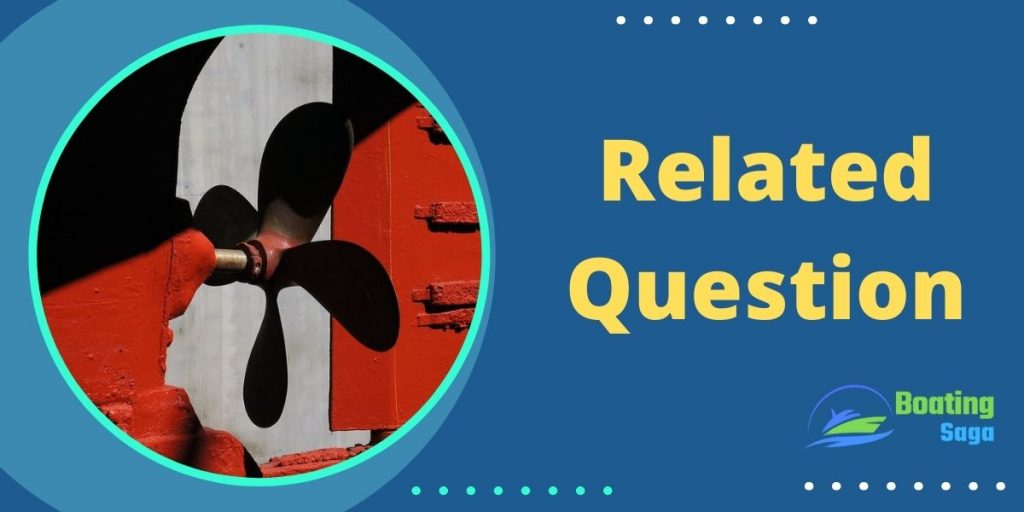
Which Way Does a Boat Propeller Turn to Go Backward?
The direction a boat propeller turns to make the boat go backward is the opposite of the direction it turns to make the boat go forward. This is because when the propeller spins clockwise, it pushes water backwards, which makes the boat move forwards. When the propeller spins counterclockwise, it pulls water backwards, which makes the boat move in reverse.
What Happens When You Incorrectly Propel a Boat?
When you incorrectly propel a boat, the consequences can be dire.
First of all, you can damage the boat or the propeller. This can be very expensive to fix. Second of all, you can injure or even kill someone with the propeller. Finally, you can cause environmental damage by spilling fuel or oil into the water.
All of these consequences are serious and should be avoided at all costs.
What happens if you put wrong prop on boat?
If you put the wrong prop on your boat, it can result in a number of problems.
- First, the incorrect prop can create too much or too little thrust, which can cause the boat to move too quickly or slowly. This can make it difficult to control the boat and may also damage the engine.
- Additionally, an incorrect prop can cause the boat to vibrate excessively, which can be both uncomfortable and dangerous.
- Finally, an incorrect prop may not be able to provide enough power to move the boat through the water, which can lead to overheating or even engine failure.
How Do You Stop a Boat With a Propeller?
When you want to stop a boat with a propeller, you need to understand how the propeller works. The propeller is attached to the engine, and it rotates around the shaft. The blades on the propeller create thrust, which moves the boat forward. To stop the boat, you need to block the thrust from the propeller. There are several ways to do this.
One way is to use a brake system. This system uses a series of disks that are mounted on the shaft. When the disk hits a stopping object, it creates resistance and stops the rotation of the propeller. Another way to stop a boat with a propeller is by using reverse thrust.
This method uses water or air to block the blades of the propeller, which slows down or stops the boat.
Conclusion
The direction a propeller turns depends on the direction the boat is travelling. If the boat is travelling forwards, the propeller should turn clockwise to create forward motion. Conversely, if the boat is travelling in reverse, the propeller should turn counter-clockwise to create reverse motion. By understanding how a propeller works, boaters can ensure their boat travels in the desired direction.
Interesting Read: What Do Boat Prop Numbers Mean

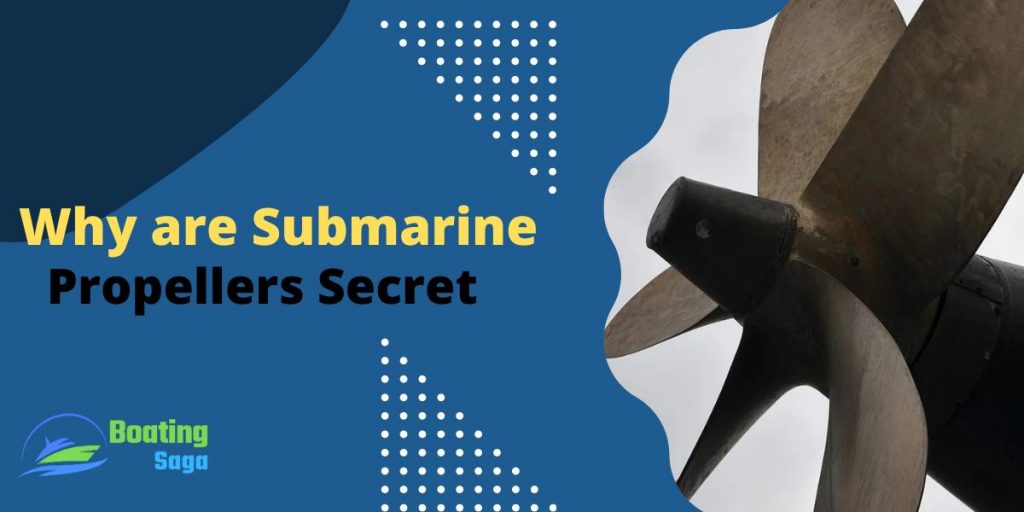

Pingback: How Do Counter Rotating Propellers Work on Boats?
Pingback: How Fast Does a Boat Propeller Spin? - Lets Find Out!
Pingback: Why Are Ship Propellers Scary (5 Reasons to Know)